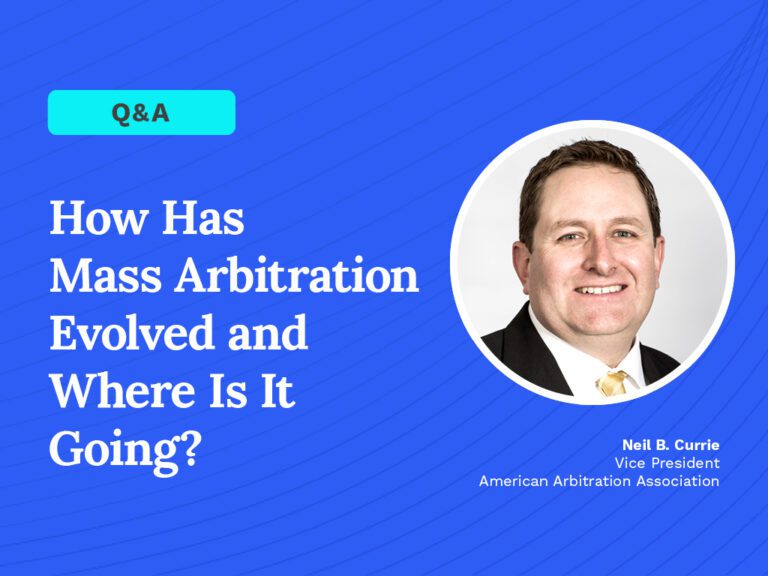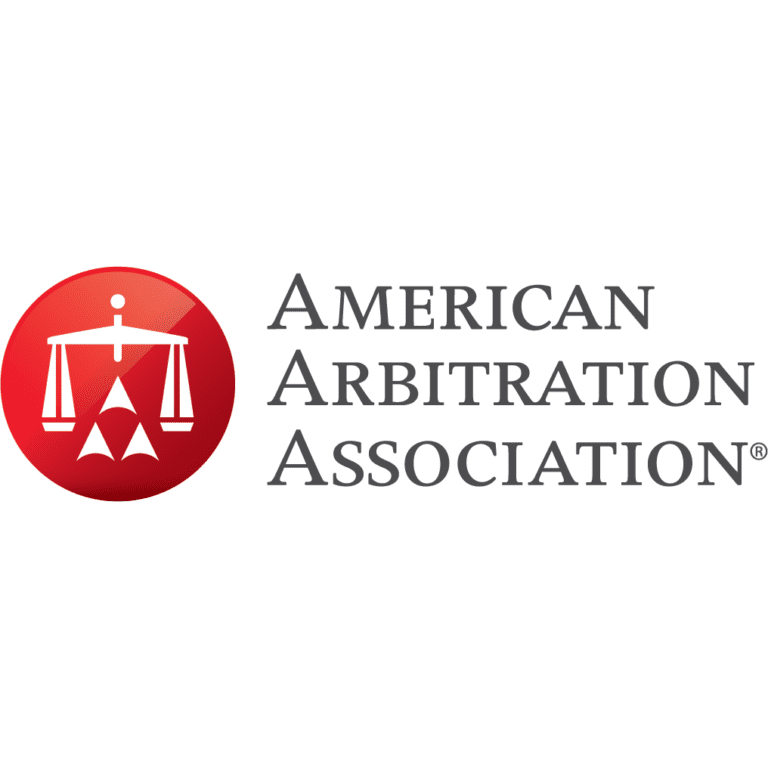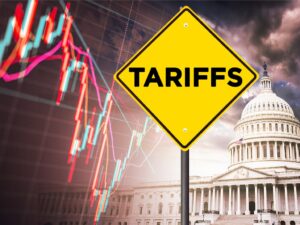How Has Mass Arbitration Evolved and Where Is It Going?
Interview with Neil B. Currie
October 3, 2023

Neil B. Currie is a Vice President of the American Arbitration Association. Mr. Currie currently oversees the AAA’s Consumer Division and SelfRepresented Case Administration Team.
Originally published in Today’s General Counsel, October 2023

Sponsored Content
Tell us about the AAA and the services it provides.
The American Arbitration Association (AAA) is the largest private global provider of alternative dispute resolution (ADR) services in the world. It is a not-for-profit organization founded in 1926. It is dedicated to the fair, effective and economical methods of dispute resolution through education, technology and solutions-oriented service. The AAA provides a variety of dispute resolution processes. The most common ones that people are familiar with are arbitration and mediation.
We provide these services to a wide range of user communities including commercial, employment, international, labor, consumer and construction. We also provide dispute resolution programs for states, such as the New York State no-fault insurance program and the Minnesota no-fault arbitration program. And we have provided services for communities that are impacted by natural disasters, including the North Carolina Disaster Mediation Program and the Superstorm Sandy Mediation programs in New York and New Jersey.
The AAA has been a leader in the development of due process fairness standards for a variety of types of disputes and fields, including the consumer due process protocol, the employment due process protocol and the healthcare due process protocol. The goal of these protocols is to ensure fairness and evenhandedness in the resolution of disputes when used in concert with the AAA’s arbitration rules. We have a roster of arbitrators and mediators composed of distinguished former judges and leaders in the legal and business communities who have industry-specific knowledge and expertise. Arbitrators and mediators on AAA panels are not employees but instead are independent contractors for the parties. We hold them to strict principles of integrity, conflict management service, diversity and inclusion.
What is mass arbitration?
The AAA has a long history of administering large-scale individual cases. They include insurance-related disputes, disputes arising from financial crises like the Great Recession as well as cases related to asbestos-related personal injuries. Mass arbitration has emerged as a way of resolving a large number of individual claims. The AAA defines mass arbitration as arbitrations with 25 or more similar demands for arbitration. They are filed against or on behalf of the same party or related parties, with the representation for those parties consistent or coordinated across all of the cases. The AAA’s Mass Arbitration rules will apply when our definition of mass arbitration is met and either the AAA’s employment and workplace fee schedule or the consumer fee schedule applies to the arbitrations, or by party agreement
What is the relationship between class arbitration and mass arbitration, and how do they differ?
They are different in practice for the AAA. In class arbitration, similar to class litigation, the claimants are known as a class, which includes all the people potentially impacted by the issue. They are not individually named, however. The claim is filed by one or more parties or a representative on behalf of the larger group. A single arbitrator decides the matters that affect that entire class of potential claimants. The key difference between mass arbitration and class arbitration is that in mass arbitration the claimants all separately file demands for arbitration. Each claimant is named individually and is assigned to a separate Merits Arbitrator. It is these arbitrators who decide the ultimate merits of the case before them between that claimant and the specific respondent. Cases that proceed to the Merits Arbitrators are decided individually. There is a separate decision, or award, for each case from the Merits Arbitrator based specifically on the laws and the facts of that case. Mass arbitration claims are administered under a separate set of AAA rules, the Mass Arbitration Supplementary Rules.
What are the Mass Arbitration Supplementary Rules? Tell us more about them and how they work.
We felt that we needed a rule set to address the unique aspects of these cases. And we wanted to create a process that would be workable and beneficial to all involved. As a result, Mass Arbitration Supplementary Rules were implemented over the past couple of years. These rules signify the AAA’s commitment to addressing the unique challenges and complexities associated with these cases and demonstrates our dedication to staying current and adapting to the ever-changing landscape.
Let me explain how supplementary rules function in conjunction with the base rule set. For most of our history, the AAA has developed rules to govern disputes. Probably the ones that are most well-known are our Commercial Arbitration Rules, which generally address business-to-business disputes. AAA Rules set forth the rules of the AAA’s arbitration process, starting with filing the case, then to the initial interactions with the AAA, and on to appointing an arbitrator. There are the pre-hearing steps — the exchange of information and a preliminary hearing — that determine when things are going to happen. The process continues through the award and what happens after the award. That is how most of the AAA arbitrations are constructed.
The Supplementary Rules supplement one of these base rule sets, addressing the unique aspects of mass arbitration and providing effective administration tools so that the numerous cases proceeding at the same time can move through efficiently, effectively and economically for everyone from start to finish. They provide specific mass arbitration features that address any unique challenges the parties might have. Sometimes there are specific steps the parties want to take. This is allowed under the Supplementary Rules. The cases are all different, and the rules are flexible enough to allow the parties to customize them so that they can make agreements that address their specific needs.
One thing I’d like to point out that is very innovative in terms of our mass arbitration rules is that we developed a position called the Process Arbitrator. It was created to address party disputes about the administrative process of the arbitration, such as which rules would apply if there’s a dispute between the parties over whether the commercial or consumer rules apply. Those sorts of arguments can be addressed early on by the Process Arbitrator, and their decision would be applicable to all the cases from that point forward. This would allow the parties to proceed in a more efficient manner. The underlying substantive disputes could move through the arbitration process, and a Merits Arbitrator would be appointed to each individual case to provide a final determination.
Are there any other efficiencies, such as special processes, that parties use to resolve mass arbitration and what are they?
Absolutely. Based on our extensive experience in assisting parties with large dispute resolution processes, we not only develop effective and economic rule-based processes for these arbitrations, we also work with parties to develop unique procedures customized to best resolve their cases. Here are some examples of these additional procedures.
- Agreed-upon scheduling order. This allows the parties to set deadlines for various things such as submission of documents, witness lists, or when the discovery should be completed or motions should be filed. Parties can agree to a scheduling order that applies to each case across the board. The benefits are that it may limit the number of preliminary hearings needed and can be a significant money saver.
- Use of a Special Master. That’s another type of dispute resolution professional who can oversee issues common to the case such as discovery, choice of law or whether there are statute of limitations arguments. The Special Master is someone the parties can use outside of their Merits Arbitrator to make decisions that are impactful to all the cases that proceed.
- Agreement to hear cases just on documents. With this procedure, you present your arguments per your materials and your evidence to an arbitrator just on papers or documents. Economically, this cuts through the time it takes to schedule and hold a hearing.
- Assigning multiple cases to a single arbitrator. Agreeing to assign multiple cases to one arbitrator makes scheduling much easier and the hearings much more efficient. Even though the individual arbitrator will still decide each case individually, that arbitrator will have a lot of knowledge and expertise in working with the parties and can be extremely efficient in deciding multiple cases on an individual basis.
- Agreeing to an award form. The parties can say that they want the award in a specific format, and all of the Merit Arbitrators would follow that format. Not only would this simplify the process for all of the arbitrators, it can be a time saver. It could also limit briefing motion and discovery requests, which normally take up a lot of time.
- Considering agreements on testimonies. The parties also may want to consider agreements on testimonies, which would allow an affidavit or a recorded deposition instead of live witness testimony.
- Expanding the role of Process Arbitrator. Sometimes parties decide to expand the role of the Process Arbitrator. They find that as they work with the Process Arbitrator, they have established a rapport, the Process Arbitrator having gained their trust and demonstrated that they thoroughly understand the case. Sometimes the parties will turn issues over to that Process Arbitrator and say, “Hey, we are having trouble scheduling.” Or “We’re having trouble coming up with a good process to appoint our Merits Arbitrator. Could you help us with that?” Or “Could you give us a decision on what is the best process on how to facilitate the type of hearings that are going to take place?”
- Considering use of mediation. From our experience, a mediator is a very important part of the mass arbitration process. When parties use a qualified mediator to engage in a global mediation process, we’ve found a high rate of settlements for mass arbitrations. We have many qualified mediators with experience in large-scale disputes who can assist the parties, whether at the outset of the filing or during the middle of the case. Not only can the mediator, hopefully, resolve the case on a global scale, but if they can’t resolve it, they can assist the parties in narrowing down their issues.
- Collaboration. Ultimately, what we found to be the most effective has been the parties’ representatives working in collaboration with an experienced administrator from the AAA to curate dispute resolution processes that fit the needs of the parties and the specific cases.
Is technology playing a different role in mass arbitration than it has in the past?
Technology has been a real benefit to mass arbitration. It has allowed us to create processes that have improved the administration of these cases. Our technology systems have provided efficiencies that make managing the cases easier and more cost-effective for everyone. For example, we have a different filing fee for mass arbitrations that is lower than the filing fees for our core cases because we were able to create efficiencies in the intake process.
An important technological component emerging from the pandemic has been the use of video conferencing, which has exploded in the ADR world. It makes it much easier to schedule, handle cases and work with people all over the country. On another level, we have secure portals for parties and arbitrators to manage their cases and best practice protections against both external and internal cyber threats. We have invested in technology to help protect all case data stored and managed on our technological infrastructure, and maintain the highest caliber of data privacy protection.
Twenty years ago, it might have been a lot harder to do some of the things we’re trying to do today. We’re always creating new technological enhancements and rolling out new tools. And we’re engaged in ongoing discussions and review of AI, about what it can do related to dispute resolution.
Tell us about the arbitrators who handle the disputes.
The roster of all arbitrators available to be appointed to an AAA case generally is described as a “panel.” And in the context of mass arbitration, specifically, it would be all those arbitrators the AAA has identified who are available to be appointed to a mass arbitration case. An option the parties might consider agreeing to use is a concept that we call a “rotating panel of arbitrators” to decide the cases in a mass arbitration. This would require the parties to agree to a specific number of arbitrators, say 20-30 arbitrators, and then cases would be assigned individually to each of these arbitrators until all of them have been assigned a case, at which time the process starts again with this same group of arbitrators being assigned an additional case. In the end, an arbitrator would be assigned to multiple individual cases, each to be decided on its own merits. Such a process could be a more efficient way to appoint arbitrators to cases if the parties are interested and can agree.
As with all cases at the AAA, the Merits Arbitrators serving on these cases have expertise in the underlying subject matter of the disputes. Our mass arbitration arbitrators consist of accomplished attorneys with subject matter expertise, as well as former federal and state judges. They understand the intricacies and the variance of the cases and the industries they’re involved with. For the arbitrators who join our panels, the AAA provides state-of-the-art dispute resolution training as well as ongoing training to focus them on managing the process with fairness and skill. The AAA also provides specialized training for unique aspects of the mass arbitration process.
We’re very committed to provide the parties with a diverse roster of arbitrators and mediators. For the two most common areas of mass arbitration, employment and consumer, the AAA has a roster available on the employment side that as of June 2023, is 48% diverse; and on the consumer side, one that is 38% diverse. These figures continue to increase with the AAA’s ongoing efforts. Earlier this year, we signed onto the Ray Corollary Initiative Pledge for Alternative Dispute Resolution Providers, which is an industry-wide effort to increase the number of women and racially and ethnically diverse ADR professionals who serve as arbitrators, mediators and other dispute resolution neutrals.
Something else that sets the AAA apart is that we have the size and reach for both our national and international panels. Obviously, most of the mass arbitrations we’re talking about are domestically based. We have a panel that stretches from coast to coast, north to south. We also have a robust international panel should a mass arbitration-related matter arise that has an international component.
Finally, and probably most importantly, our panelists are committed to serving pursuant to high, stringent standards of ethics and integrity. All panelists serving on these arbitrations must commit to the Code of Ethics for Arbitrators in Commercial Disputes, which is the industry standard. We also ask the panelists to commit to additional standards, the Standards of Responsibility, established by the AAA. The AAA takes all of these commitments very seriously. We expect arbitrators to comply with these requirements when they’re serving on our AAA roster. If there are any issues, we address them directly with the panelists in the case, and then we monitor that issue moving forward.
Do you seek out the arbitrators or do they come to you?
We have a wide range of vice presidents who oversee our panels throughout the United States and internationally and recruit for various industries and various sections of the country and around the world, depending on what is needed. The vice presidents who oversee these panels recruit arbitrators based on the needs of the AAA and their local areas. We do have people who approach the AAA if they’re interested in serving as a dispute resolution provider as well, but our standards are quite high. We’re obviously very discerning about who we bring onto a panel.
What is one thing that you would like to emphasize that is unique about the AAA?
Given our size and experience with large-scale group cases, it is unlikely that any other ADR provider could handle our large mass arbitration caseloads. Whether it’s a financial or natural disaster, we are able to use our experience, our staffing, our technology and our panelists to resolve claims efficiently in extremely trying circumstances. This is part of our history and unique to the AAA. We have vast national and international arbitration panels that we can deploy to handle such large-scale disputes. We know what to do and how to interact with the parties involved. As the industry leader, we are in a good position as we move forward and as mass arbitrations continue to develop and change.
Is there anything you’d like to say in closing?
Since the founding of the AAA, we’ve tried to adapt and move forward to address what is taking place in the field of ADR, which was relatively new when the company began. Arbitration, mediation and dispute resolution, for example, have significantly expanded. The great thing about alternative dispute resolution at the AAA is that we can provide flexibility when developments such as mass arbitration arise. Mass arbitration itself is a flexible process. It is a process that works best when the parties are collaborative, when they’re not trying to bring a litigation mindset into it to try to fight every aspect. If the process is going to work well for all sides, we think it’s best that the parties work with the AAA and with opposing counsel to come to some agreements about what is going to meet their needs. This normally ends up with better outcomes, along with cost savings and greater satisfaction for all parties.
Must read intelligence for general counsel
Subscribe to the Daily Updates newsletter to be at the forefront of best practices and the latest legal news.
Daily Updates
Sign up for our free daily newsletter for the latest news and business legal developments.




